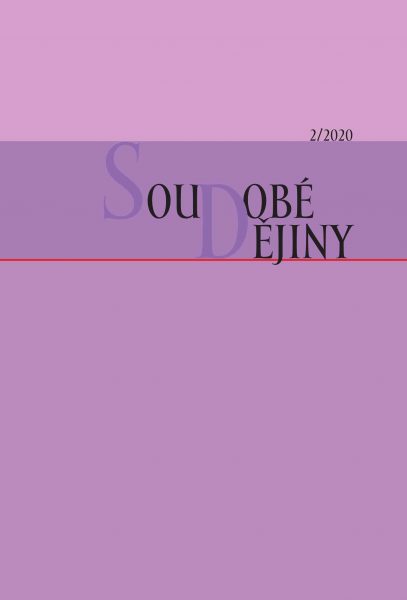Rozpolcená paměť
Diverging memory
Memory tradition of the 1956 Hungarian revolution
Author(s): Réka SárközySubject(s): History, Political history, Recent History (1900 till today), Post-War period (1950 - 1989), History of Communism
Published by: AV ČR - Akademie věd České republiky - Ústav pro soudobé dějiny
Keywords: Hungary;1956 revolution;historical memory;Communism;FIDESZ
Summary/Abstract: The article is based on Réka Sárközy’s presentation delivered at “The Prague Spring 50 Years After: Great Crises of Communist Régimes in Central Europe in a Transnational Perspective” conference, which took place in Prague from June 13 to June 15, 2018, and was organized by the Institute for Contemporary History of the Academy of Sciences of the Czech Republic together with the Office of the Government of the Czech Republic. The authoress describes the formation of the historical memory of the 1956 revolution in Hungary since 1989. She concludes that the events of 1956 had been a starting narrative long before they could be freely discussed in public, i.e. at the time when their memory had been denigrated or pushed into oblivion as a stain on the beginning of the rule of János Kádár (1912–1989). In 1989, the transformation of the revolution into a positive historical myth deprived Kádár’s regime of legitimacy. After its fall, the revolution became a point from which all political parties derived their legitimacy. In the 1990s, multiple revolutionary traditions assembled around two opposite and mutually clashing opinions. The first of them, which can be labelled as reform Communist, was related to commemoration of the former Communist Prime Minister Imre Nagy (1896–1958) and left-wing intellectuals who had actively participated in the revolution. The other one emphasized the key role of freedom fighters and was of an anti-Communist nature from the very start. At the same time, the discourse of professional historians and recollections of contemporary witnesses were drifting apart. The anti-Communist tradition was appropriated by FIDESZ, since 2010 the ruling party, to strengthen its position. The authoress analyzes the party’s massive public campaign on the occasion of the sixtieth anniversary of the revolution in 2016, which was supposed to canonize the image of the revolution as an anti-Communist popular movement, but failed. As a matter of fact, the person of a revolutionary on a photograph which was the principal symbol of the campaign on billboards and posters proved to be a different young man who was just an accidental bystander.
Journal: Soudobé Dějiny
- Issue Year: XXVII/2020
- Issue No: 2
- Page Range: 325-333
- Page Count: 9
- Language: Czech

